Surgeries are recommended to make or confirm a diagnosis, remove damaged tissue or an obstruction, repair or repositioning tissues or organs, implanting devices, redirecting blood vessels, or transplanting tissues or organs, or for cosmetic reconstructions. Urologic surgeries, in particular, are performed to treat obstruction, dysfunction, or malignancies in the pelvis, colon, urogenital or gynecological organs. Urology surgery coding requires training & knowledge as the coders have to keep up with thousands of yearly changes made to the ICD & CPT systems. Despite the frequent changes, few guidelines have remained consistent and continue to serve as key urology surgery & radiology coding rules.
General Surgery Coding Guidelines
Typical Surgery Procedures
The following services related to the surgery, when furnished by the physician or other qualified health care professional, are included in addition to the operation:
-
Evaluation and management services after the secession for surgery on the day before or day of surgery (including history and physical)
-
Local infiltration, digital blocks, or topical anesthesia
-
Immediate postoperative care, including dictating operating notes, talking with family and other physicians, or other qualified health care professionals
-
Writing orders
-
Evaluating the patient in the post anesthesia recovery area
-
Typical postoperative follow-up care
Follow up care for Diagnostic & Therapeutic Procedures
-
Follow-up care for diagnostic procedures such as endoscopy, arthroscopy, injection procedures for radiography is coded along with the diagnostic procedure itself. Coding for the care of the condition for which the diagnostic procedure was performed is not included and may be billed separately.
-
Follow up care for therapeutic surgical procedures include care procedures that are usually a part of the surgical service
Supplies
Supplies and materials (e.g., sterile trays/drugs), usually included with the procedure(s), are rendered and reported separately. For list drugs, trays, supplies, and materials provided, CPT 99070 or a specific supply code should be used while coding.
Reporting more than one Procedure/Service
When more than one procedure is performed on the same date, same session, or postoperative period, several CPT modifiers should apply.
Example:
-
Modifier 25 – Used while coding for separately identifiable major evaluation and management services provided by the same physician or other qualified health care professional on the same day of the procedure
-
Modifier 59 – Used while coding for Distinct Procedural Service, i.e., a procedure different from another procedure performed on the same day.
-
Modifier 51 – Multiple Procedures
Imaging Guidance
Radiology guidelines (including Nuclear Medicine, diagnostic ultrasound) will apply when imaging guidance or imaging supervision and interpretation are included in a surgical procedure for visualization, documentation, and report. Imaging guidance should only be reported when an imaging modality is used and is appropriately documented.

